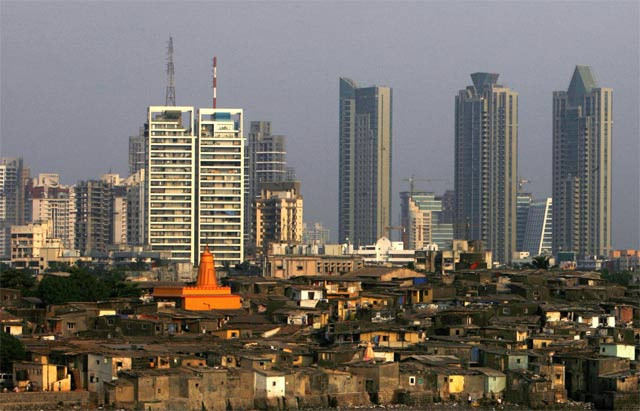Rethinking urbanisation to develop climate-resilient cities
Data shows cities are responsible for 75% of global energy consumption, 70% of GHG emissions

Cities have been assigned the tag of the engine of growth due to their multifaceted role in the development of human society. Analysis of historical data also points to the same conclusion.
The World Bank estimated that 80% of the world's GDP is generated from cities. UN-Habitat described that the leading factors behind the theory of cities as engines of growth are productivity and efficiency in production and services, competitiveness enhancement through increased efficiency, centres of knowledge and innovation due to diversity and concentration, and business opportunities created by urban concentration and improved quality of life.
These factors triggered a race among countries for urbanisation. The developed world was way ahead due to its economic status, technological development, and financial resources.
The end of World War-II further accelerated the process, as economic growth took a new turn due to rapid industrialisation. Globalisation gave a new impetus to urbanisation.
Today, cities host more than 4.52 billion people, compared to only 750 million in 1950. The trend is expected to continue, with cities contributing even more to the global GDP, and many are anticipated to become trillion-dollar economies.
However, cities have also introduced multiple challenges and problems for humanity. Meeting the food and energy needs of cities has become increasingly difficult.
According to statistics, cities account for 30% of water consumption and 70% of global food consumption. Unfortunately, cities are also major contributors to food wastage, which worsens environmental degradation and greenhouse gas (GHG) emissions. Water pollution and waste are additional problems.
Moreover, cities have become centres of public services like education, healthcare, and transport, leading to a stark divide between urban and rural areas.
The most significant challenge, however, is climate change. Data shows that cities are responsible for 75% of global energy consumption and 70% of GHG emissions, despite occupying only 2% of the world's landmass.
At the same time, cities are also becoming the biggest victims of climate change. It is predicted that climate change could threaten 44% of cities' GDP, putting the livelihoods of billions at stake. This is a burden the world cannot afford, given the existing challenges of poverty, food insecurity, and inequality.
Unfortunately, the current urbanisation model cannot provide solutions; rather, it is part of the problem. The world has attempted to manage urban issues through improved governance, but the desired results have not been achieved. Why?
Because the existing urbanisation model is outdated. It was developed after the first industrial revolution and is inadequate to address the challenges of the third and fourth industrial revolutions. A new or alternative urbanisation model is therefore required.
This new model must ensure vibrant cities, reduce GHG emissions, preserve environmental indicators, build resilience against climate change, improve human and planetary welfare, and bridge the rural-urban divide. Spatially Hybrid Urbanisation (SHU) is one such alternative.
The idea of SHU has been developed with these objectives in mind. The core objective of SHU is to work with existing non-urban settlements and convert them into urban centres while maintaining their non-urban characteristics and minimising impacts on their surroundings.
The SHU model is designed to be implemented systematically in four phases. The first phase involves profiling the area and mapping livelihood opportunities, climatic conditions, and population density. The second phase focuses on mapping the availability and need for services such as water, education, health, electricity, and the internet.
The third phase involves a deeper analysis of livelihood opportunities, such as the state of business, industry, resources, skills, and future needs. The fourth and final phase critically examines the existing connectivity infrastructure, including internet access, roads, and transport.
These phases help identify the potential of settlements and outline the requirements for transforming non-urban centres into urban ones.
A key question is how SHU can contribute to the four indicators highlighted by the UN-Habitat. The answer lies in leveraging tools of the fourth industrial revolution, such as information technology.
For instance, e-commerce has already demonstrated its ability to decentralise population concentration, with companies like Amazon and Alibaba redefining global business practices. Enhanced connectivity through technology can also create platforms for diversity, driving innovation.
The role of technology during the Covid-19 pandemic offered a glimpse of what is possible. It mitigated the impacts on mobility and ensured the continuity of supply chains and production facilities. Remote work, virtual meetings, and online education became the norm, illustrating how technology can sustain urban functions.
For example, in education, schools in remote areas could be connected to urban schools via video links, ensuring quality education for all. Similarly, telehealth has already proven successful in bridging healthcare gaps. Other services and industries can also adopt modern tools.
Physical accessibility should follow models like China's 1-2-3 transportation network, ensuring that education and healthcare are within 30 minutes, livelihood opportunities within 45 minutes, and recreation within 60 minutes.
It is time to rethink urban centres and cities in response to changing circumstances. The opportunity is here, and it depends on whether we cling to outdated norms or embrace innovative approaches like SHU to create sustainable urban centres.
China is well-positioned to lead this transformation due to its ongoing urbanisation and technological leadership. Over the past four decades, China's urban population has risen from 17% in 1978 to 66.6% in 2023, with further growth expected.
Additionally, China is at the forefront of advancements in connectivity and logistics through technologies such as 5G, 6G, and three-dimensional transport networks. During the Covid-19 lockdown, China successfully maintained its supply chains and provided essential services to its 1.38 billion population.
If China adopts the SHU model, it could serve as a global example of sustainable urbanisation. Its success could pave the way for other countries to follow, providing the world with a viable alternative for better and more sustainable urban development.
THE WRITER IS A POLITICAL ECONOMIST AND A VISITING RESEARCH FELLOW AT HEBEI UNIVERSITY, CHINA


















COMMENTS
Comments are moderated and generally will be posted if they are on-topic and not abusive.
For more information, please see our Comments FAQ